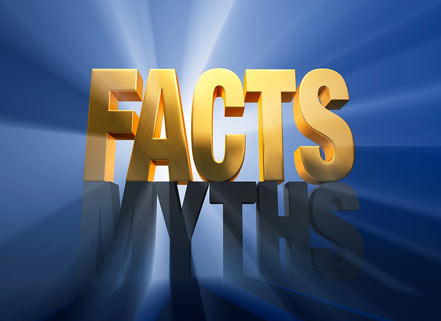
That's not really true, at least in the sense of partisan identity. While the largest political group in the country is self-described independents, poll after poll shows that most of those independents actually end up mostly aligning with one major party or the other.
Pew Research Center published an expansive look at political independents Thursday, and it's hard not to come to a simple conclusion: Independents are, for the most part, partisans who are disillusioned with the two major parties.
In Pew's assessment, 38 percent of Americans are independents - but 7 percent are independents who don't lean toward one party or the other. That's been fairly constant over the past two decades.
What's more, those "true" independents, if you will, are less politically engaged than partisans or than independents who lean toward one party. Pew's data suggest that about 6 in 10 "true" independents are registered to vote, about the same percentage as those independents who lean Democratic. But nearly half of those Democratic leaners voted in 2018, compared with a third of the independents who don't lean toward a party.
Perhaps the most interesting part of Pew's research is the data showing how closely independent leaners generally mirror the members of the parties to which they lean. Most Republican-leaning independents identify as conservative, for example, more than identify as moderate. As Democrats have increasingly identified as liberal, so have Democrat-leaning independents, though more of that group identify as moderate than liberal, which isn't true among Democrats.
But Republican-leaning independents are much less conservative than Republicans, by a 21-point margin. The gap between Democrats and Democratic-leaning independents on identifying as liberal is eight points. In both cases, the leaners are more moderate than the members of the parties to which they lean, Republican leaners by 17 points and Democratic leaners by eight points.
That likely influences the gap that exists between Republicans and Republican-leaning independents on a variety of issues included in Pew's poll.
On average, Republican-leaning independents are 10 points less likely to take the conservative position across some issues than self-identified Republicans. The gap between Democrats and Democratic leaners is only about a point. When considering the liberal side of each of these questions - oppose the border wall, favor marijuana legalization, etc. - the gaps are similar.
That space between Republican-leaning independents and Republicans likely overlaps with the gap between the two groups in views of President Donald Trump. Pew's data show a 15-point gap between the groups in approval of Trump. For Presidents George W. Bush and Barack Obama, independents who leaned with the then-president's party were substantially less enthusiastic about their presidencies than members of their own parties.
So why aren't these leaning independents just members of the political parties? Consider that most people don't really have a lot of confidence in either party. An NPR-PBS NewsHour-Marist poll released last year showed that 36 percent of Americans had a "great deal" or "quite a lot" of confidence in the Democratic Party and 29 percent felt that positively about the Republicans. In Pew's poll, about a quarter of those who said they leaned toward one party or the other also said they viewed both parties unfavorably. The implication is that parties have driven some voters away.
Most leaners only see negatively the party to which they don't lean. As negative partisan views have increased, that's happened among leaning independents, as well.
While Republican-leaning independents view the Republican Party more negatively than Republicans do, their views of the party also have improved in the Trump era.
There's another way to look at what Pew outlines. There are, in essence, strong and weak Democrats, strong and weak Republicans and "true" independents who are less likely to actually vote. That way of looking at American politics shows why candidates like Schultz have a tougher climb than they might presume.
(COMMENT, BELOW)
Every weekday JewishWorldReview.com publishes what many in the media and Washington consider "must-reading". Sign up for the daily JWR update. It's free. Just click here.


 Contact The Editor
Contact The Editor
 Articles By This Author
Articles By This Author